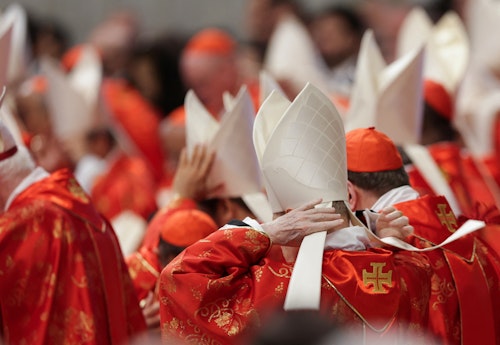VATICAN CITY – As the world awaits the white smoke signaling the election of a new Pope, the inner workings of the papal conclave, a centuries-old ritual steeped in tradition and secrecy, remain a source of fascination and intrigue. Here’s a look at the key steps involved in this extraordinary process:
1. The “Extra Omnes” and Sequestration:
Following the death or resignation of a Pope, and after a period of mourning, the cardinals gather in Rome. The conclave officially begins with the “Extra Omnes” (Latin for “everyone out”) declaration, signaling that all non-cardinals must leave the Sistine Chapel. The doors are then locked, sealing the cardinals off from the outside world. This sequestration aims to ensure complete freedom from external influence and maintain absolute secrecy.
2. The Cardinal Electors:
Only cardinals under the age of 80 are eligible to vote. This restriction, introduced by Pope Paul VI, aims to ensure that those electing the Pope possess the physical and mental capacity to handle the demands of the papacy. The current conclave comprises 133 cardinal electors, representing a diverse cross-section of the global Catholic Church.
3. The Balloting Process:
The election takes place through a series of secret ballots. Each cardinal writes the name of their chosen candidate on a slip of paper, folds it, and places it in a designated urn. The ballots are then counted by scrutineers.
4. The Two-Thirds Majority:
For a candidate to be elected Pope, they must receive a two-thirds majority of the votes cast. In the current conclave, this means 89 votes. If no candidate achieves this majority, the ballots are burned, and black smoke is released from the Sistine Chapel chimney, signaling a failed vote.
5. Multiple Rounds of Voting:
The balloting process continues, typically with two votes in the morning and two in the afternoon. If no Pope is elected after three days of voting, a pause for prayer and reflection is observed. The voting then resumes, and if a deadlock persists, the cardinals may adjust the voting procedure, potentially requiring a simple majority after a specified number of ballots.
6. The White Smoke and “Habemus Papam”:
When a candidate receives the required two-thirds majority, the ballots are burned with damp straw, producing white smoke. This signal is the eagerly awaited sign that a new Pope has been elected. The senior cardinal deacon then announces the election from the balcony of St. Peter’s Basilica, proclaiming “Habemus Papam” (“We have a Pope”), followed by the new Pope’s chosen name.
7. The New Pope’s Acceptance and Vesting:
The elected cardinal is asked if he accepts the election. Upon acceptance, he chooses a papal name and is vested in the white papal garments. He then appears on the balcony of St. Peter’s Basilica to give his first blessing, “Urbi et Orbi” (“to the city and to the world”).
8. Secrecy and Security:
Throughout the conclave, stringent measures are in place to maintain secrecy. Cardinals are forbidden from communicating with the outside world, and electronic devices are confiscated. The Vatican also employs signal jammers to prevent any form of electronic eavesdropping.
9. The Role of the Holy Spirit:
While the conclave involves a structured electoral process, Catholics believe that the Holy Spirit guides the cardinals in their decision. The cardinals engage in prayer and reflection, seeking divine guidance as they discern who should lead the Church.
The papal conclave, with its blend of ancient tradition and modern security, remains a unique and compelling event. As the world watches, the cardinals’ deliberations will determine the future direction of the Catholic Church and its influence on the global stage.
